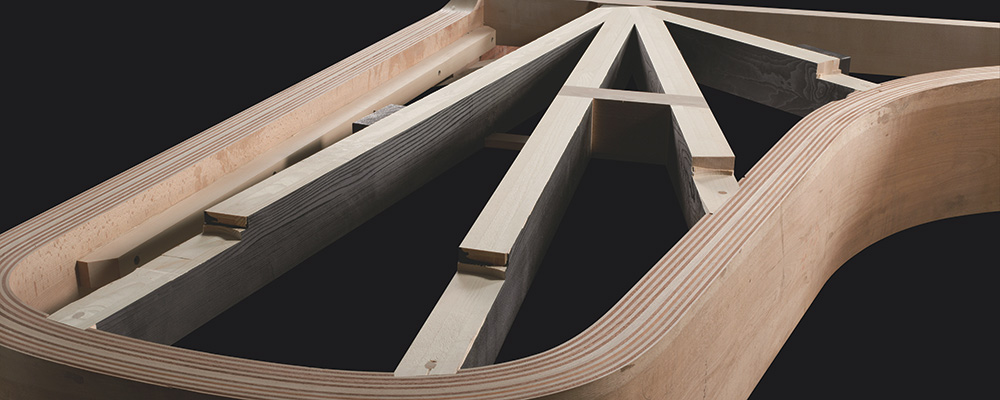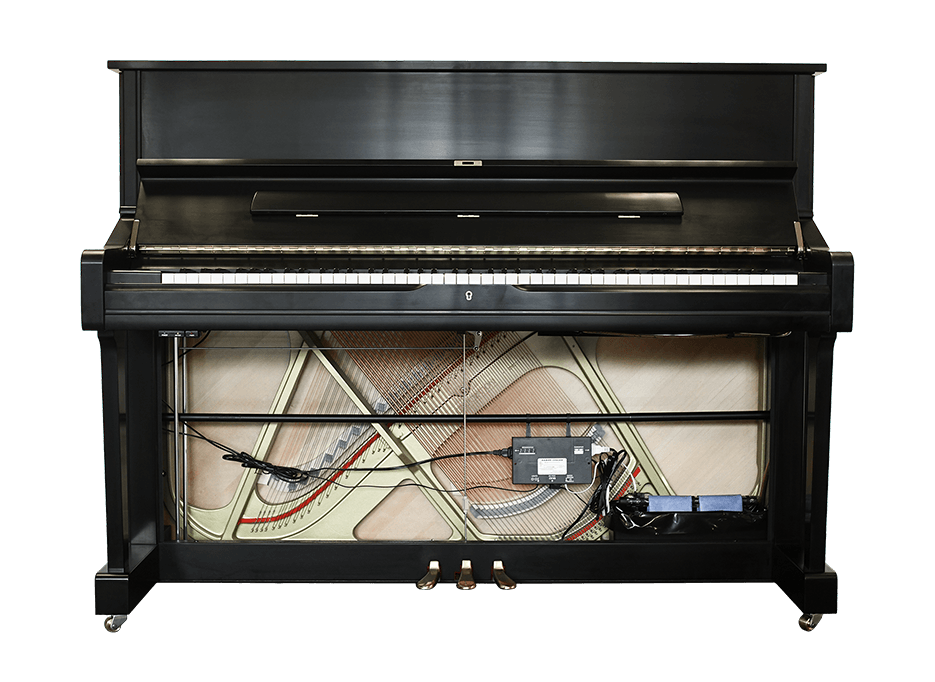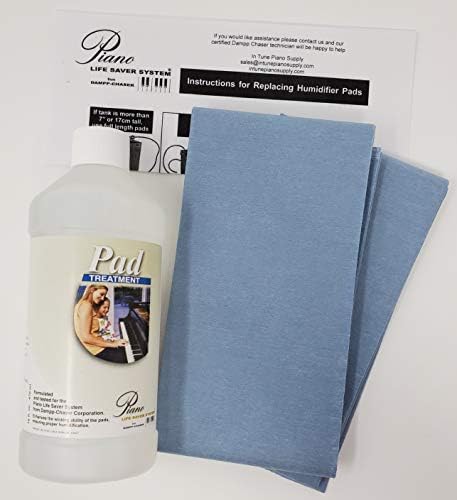Why install a Dampp-Chaser Piano Life Saver (PLS) system?
I have a full article on Dampp-Chasers, how they work, and why you may very well need one. If you’re uncertain whether a Dampp-Chaser Piano Life Saver System is for you, start there!
How much does Alex’s Piano Service LLC charge to install them?
I’ve outlined current prices for Dampp-Chaser Piano Life Saver Systems on my Price List page. These prices are, currently, discounted approximately 30% from Dampp-Chaser’s recommended sale prices—they’re adjusted for the local Maine market—so don’t be surprised if local installers quote a bit higher.
I install quite a lot of these systems in our fine state, and have gotten to watch the performance of these systems over the years. This is why I can feel confident recommending them so wholeheartedly!
| Dampp-Chaser Piano Life Saver System® (most uprights) | $575 |
| Dampp-Chaser Piano Life Saver System® (backside) | $950 |
| Dampp-Chaser Piano Life Saver System® (dehumidifier only) | $250 |
| Dampp-Chaser Piano Life Saver System® (< 7′ grands) | $600 |
| Dampp-Chaser Piano Life Saver System® (larger grands) | $975 |
So if you’re in Maine, you now know this is a great deal! You should contact me right now if you want a Dampp-Chaser installed!
Why do Dampp-Chaser system prices vary so much between pianos and quotes?
The Dampp-Chaser is a retail product, sold through technicians. The technician acts as both the installer and the retailer. Aside from the initial price of the product and any delivery fees, the technician will add a retail markup and then add their installation fee, which might be flat rate or hourly. It can also depend on how difficult the technician deems your particular installation. Finally, it depends on what your technician chooses to include beyond the base system.
You’ll see Dampp-Chaser quotes ranging widely. The most important detail is that your installer understands the system conceptually, and has experience adapting it to many pianos effectively.
You do not want to be their first Dampp-Chaser installation. Walt Stanchfield once said, “We all have 10,000 bad drawings in us. The sooner we get them out, the better.” Well, it turns out we’ve got a few bad Dampp-Chaser installations in us too. Make sure your technician has already gotten them out! Every Dampp-Chaser installation is a bit unique—some quite—and your installer needs to be up to the task.
Do Dampp-Chasers cost more to install in Yamaha Disklaviers or other player pianos?
It depends on whether the installation is in a grand or an upright. If you have an upright, the difference is dramatic—with grands, not as much.
If you have an upright Disklavier or other player piano, the system has to be placed on the backside of the instrument. These systems require two humidifiers, three dehumidifier rods, a cover over the backside of the instrument, and a fair bit of additional labor. If you have an upright Disklavier, you can expect to pay approximately $400 more.
If you have a grand Disklavier or other player piano, the same system can be used as in other grands. However, your technician will need to very carefully plan and route the equipment. Just for instance, the heat generated by the Disklavier can alter the humidity reading, so it’s necessary the controller be located far from the power supply. Disklavier components—particularly speakers—may have to be moved in smaller systems. You can still expect to pay more, at your technician’s labor rate.
Note that this depends on model as well. There are many models of player piano in existence, and my experience is primarily with Yamaha Disklaviers and modern digital players. In some older pneumatic player pianos, installation will not be possible.
Does a large grand piano require a different or more expensive system?
Yes. Grands over 6’4” often require two humidifiers, and grands over 7′ always do. These are more difficult and complicated to install, and the systems themselves cost more. You can expect to pay approximately $400 more than for a conventional grand system.
Why do Steinways sometimes require more expensive Dampp-Chaser installs?
Many Steinway uprights have narrow cabinets that won’t fit a conventional upright Dampp-Chaser system. Like with the upright Disklaviers, the system has to be placed on the backside of the instrument. These systems require two humidifiers, three dehumidifier rods, a cover over the backside of the instrument, and a fair bit of additional labor. If you have an upright Steinway, you can expect to pay approximately $400 more.
Steinway grand piano installations should not be priced any differently than those for other brands of grand piano.
What add-ons might my technician include that increase the price?
Some technicians will always install an undercover when putting Dampp-Chaser systems into grand pianos. Undercovers typically add $100-200 to the cost depending on the size of the grand. Although not strictly necessary, undercovers are often a good idea. This can make it look like some technicians are charging more for an identical system when, in fact, they’re also providing more!
Technicians can also, when ordering systems, decide between a 38 W and a 50 W dehumidifier. This is typically a judgment call made by the technician, and the client isn’t usually asked. The difference between the two systems determines, essentially, how quickly the system can react to a rapid change in humidity, and how well it can deal with true extremes. The cost between the dehumidifiers varies considerably because of shipping constraints—the 50 W dehumidifier is long. The means the system might be nearly $100 more if they opt for the larger, 50 W unit.
Can I get away with a dehumidifier-only system?
The dehumidifier only system is less than half the price. It’s a particularly good choice for preventing mold—see my article on cleaning pianos for more on mold. However, some of the worst problems are caused by low humidity, so the humidifier system can be worth the cost.
If you live in an environment where the humidity naturally stays above 40% all the time, then the dehumidifier-only choice is a fine option. However, if you live someplace like Maine, where you’re as likely to see 15% humidity as 80%, you should get the complete system.
The exception to this is pianos stored in unheated or minimally heated environments, such as churches, often don’t require the humidifier. And without the humidifier, the system requires almost no maintenance or attention. This can be helpful in environments where maintenance is difficult to coordinate.
How much does ongoing maintenance cost?
Expect to spend $40 annually on pads and treatment. Distilled water is required, and is an additional cost which will depend on your locale. Here in Maine, customers expect to spend about $5 a month on distilled water during the winter months.
As a rule, your technician does this work. However, you can purchase these pads on their own, or you can purchase them in a set which includes a new liner and a new clean sleeve, which is a plastic protector that slips over the humidifier.
In addition to the humidifier pads, you’ll need pad treatment. These bottles last most of my customers well over a year, and are vital for keeping your Dampp-Chaser bacteria and mold free!
Are there any other potential surprises?
One potential surprise is the need for “support tubes.” Some grand pianos do not have beams! This means that, in those installations, hardware has to be installed underneath the piano just to support the Dampp-Chaser system. Expect to spend about $200 extra if your grand piano does not have beams.


